Ask Jack: These… Are… the Brakes!

True story: I once dated a woman who liked to kinda-semi-roleplay that I was Hannibal Lecter and she was Clarice Starling. I don’t mean that I served her anybody’s frontal lobe with a nice Chianti and some fava beans, but more that we would try to work phrases from the book into our conversations. Just in case you are wondering, this is a distant second place in the awkward-makeout-talk category of my sordid personal history, well behind the woman who wanted me to call her Bella while she called me Edward.
In Silence Of The Lambs, Dr. Lecter tells Clarice, “We begin by coveting what we see every day.” This is one of those statements that is almost too true for us to understand. We learn to want things by looking at them. It’s why very few people have whatever mental quality is required to order, and enjoy, truly bespoke items — cars, clothing, bikes, guns, watches, whatever. We like to see things and choose from them. It’s a combined limitation of the software (ability to imagine) and the hardware (the way we “see” is fairly hard-wired into our actual, physical eyes in all sorts of ways that we are just finding out about now) that comes standard with the human body.
The mere act of seeing something can be persuasive, even if we know in our heart that it’s not right for us — which was certainly the case with the Bella-and-Edward woman, I tell you. And that is how we come to this story of a fellow who wants a very specific kind of brake for his car… even if it’s not nearly enough to do the job.
Hey Jack… what do you mean by saying that Mustangs typically need expensive brake upgrades for trackdays? Are they underbraked even with the performance-package six-piston front Brembos and 15-inch front rotors?
The problem here is that these are some awesome-looking brakes and it’s hard to believe that anything with this much visual appeal and obvious capacity isn’t quite up to the job. So maybe we need to define what the job is.
I tell my students that there are three levels of automotive brake capability. The first level is enough for a single high-speed stop. Most cars really only need enough brake to come to a safe halt from, say, 90 mph. Any brake system that can do that is probably capable of everything up to and including a mild bit of “spirited driving” on a back road. Until very recently, however, most cars did not have this much thermal capacity — something brought home to me in a forthright fashion when I drove a 1964 Continental around Cincinnati, Ohio this past weekend.
Well, that was then, this is now. The stock brakes on most Mustangs from 2005 to the present day are more than good enough for anything you’d reasonably do with them on the street. What they will not do is stand up to a 30-minute, far-above-legal-speed blast down a back road. For that, you need the next level: enough for intermittent high-speed use. Brake systems that can live up to this requirement have a lot of thermal capacity — meaning large-diameter platters, multiple front pistons, and some thought given to ventilation — but they will eventually need a rest and/or a bleeding of the boiled fluid.
Most “performance” systems, including the Brembo-branded systems out there for all of the Detroit Three pony cars, fall in this category. You can push them pretty hard over multiple stops, but you need to either give them adequate cool-off time between those stops or you need to bleed out the fluid at the end of your day and start over.
Last but not least, we have race-capable systems. These are brake systems that can perform for the entire length of, say, a nine-hour AER race without displaying an unacceptable amount of fade. There are very few cars that can accomplish this task without at least a change of brake fluid, and relatively few that can accomplish it without special race-compound pads.
The reason very few cars have race-capable systems is simple: almost nobody actually goes racing with their cars. Which wouldn’t matter if it was cheap to put good brakes on a car — look at all the cars that have flat-bottomed steering wheels despite not needing them — but it’s very far from cheap. Worse than that, high-capacity brakes are also expensive to service. I just had dinner with a fellow who works as a Maserati tech. He told me that it can cost $4k to perform a full brake service on a Ghibli. Given that the majority of Ghiblis have been sent out the door on heavily-subsidized leases that cost their owners under a grand a month, the idea of a $4,000 brake service doesn’t sit well with the lessors. Particularly not when they realize their Ghibli might need that service every year. “Isn’t there a cheaper way?” they ask.
“Absolutely. Stop using the brakes.” It befuddles these poor folks that a Ghibli needs Ferrari-level brake service but, if they were really smart, they’d ask why the Ghibli doesn’t cost more to service than, say, a 488GTB. After all, it’s heavier.
In my Instagram conversation with James, I explained to him that Mustangs actually require more brake than, say, a Corvette or Porsche 911. After all, Mustangs weigh more than Corvettes or 911s. This is hard to swallow, because it seems unfair, but the laws of physics don’t care about bang for the buck. They charge just as much thermal-capacity tax to slow down a 3,950-pound Mustang as they would a 3,950 Porsche sport-utility-vehicle. So if you are really going to push a Coyote-powered Mustang for long-run situations on a racetrack, you need at least a Macan Turbo’s worth of brakes — and even then, you aren’t going to have the same kind of bulletproof brake performance I used to get out of my Boxster S with Pagid Orange pads and high-temp brake fluid.
My minimum recommendation for a serious trackday Mustang is the Baer Extreme 15-inch brakes front and rear. In my opinion, they are going to shed heat a lot better than the (probably) Chinese Brembos that Ford offers. And with serious-sized rotors both front and rear, you won’t overheat the back brakes early into the session. That’s $6,000 worth of upgrade, which ain’t cheap. I feel bad for anybody who buys a Mustang because of its delightful engine only to find out too late that they must then provide the whoa to match the go. I can understand why it’s hard to understand why a relatively cheap car needs such expensive brakes.
As Dr. Lecter would say, “We assign a moment to decision, to dignify the process as a timely result of rational and conscious thought. But decisions are made of kneaded feelings; they are more often a lump than a sum.”
[Image: Ford Motor Company]

More by Jack Baruth
Latest Car Reviews
Read moreLatest Product Reviews
Read moreRecent Comments
- Ajla I did like this one.
- Zerofoo No, I won't miss this Chevrolet Malibu. It's a completely forgettable car. Who in their right mind would choose this over a V8 powered charger at the rental counter? Even the V6 charger is a far better drive.
- Offbeat Oddity Nope, I won't miss it. I loved the 2008-2012 Malibu, but the subsequent generations couldn't hold a candle to it. I think the Impala was much more compelling at the end.
- Zerofoo An almost 5000 pound hot hatch that fell out of the ugly tree and hit every branch on the way down? No thanks.
- Tassos Jong-iL This would still be a very nice car in North Korea.

















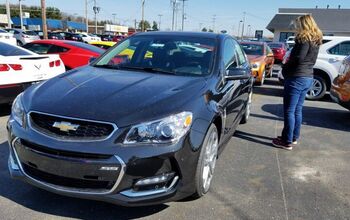
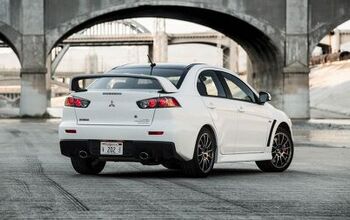

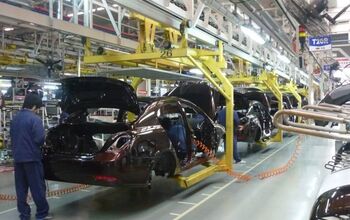
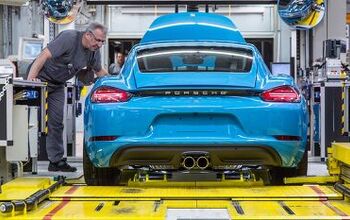
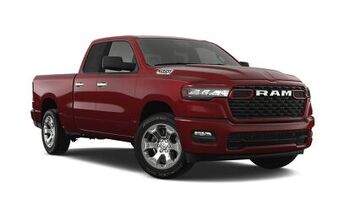

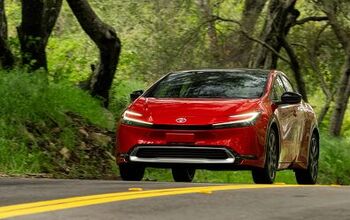
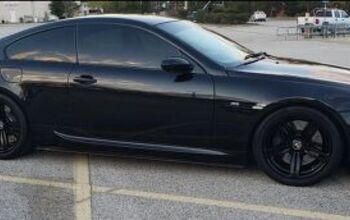

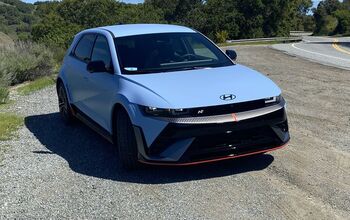
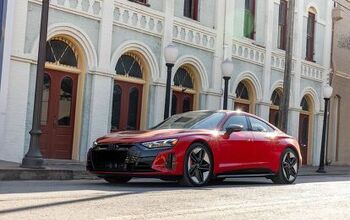
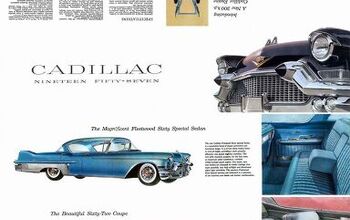

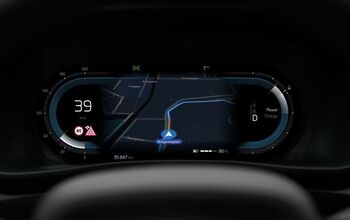

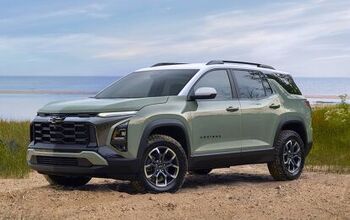
Comments
Join the conversation
I'll not forget my 1967 Fury II with "commando V8". This lead sled had lovely, lovely mopar torque, and despite over two tons of Road Hugging Weight, got up to speed faster than any malise era pony car. Lots of fun skunking the Z28's out there. Stopping was another matter. The car had disc/drums. You pretty much got one good stop...and hustling the car along (not that you'd do a lot of this) a twisty road-fade was a thing.... Today, I see the carbon fiber discs on a lot of cars. While they are pretty, for a Street Driven car, why would you want a $5k brake job ? I see them on some M cars...the Audi R10....some Vettes.....and the CTS-V. For street, is there any reason at all ? I prefer the "sport brakes" on most cars...best brakes ever on a street car were the M sport brakes on my 330i.
This a great subject,and important because sometimes people hear that they can bring any car for their first track day. While this may be true, you can bring any car, your day may be very short if you are running stock brakes. They will overheat and you may not have enough pad left to drive home safely. The easiest answer is to buy some track only brake pads, and install them at the track, and remove them before you leave the track!!! A true track only pad has almost no cold bite to it, they have to reach an operating temperature of several hundred degrees. This is why you have a warm up lap at track days, before they give you a green flag. Track tires and brakes DO NOT WORK when cold! There were some good comments about manufacturer and car magazine testing. If they really wanted to show us an apples to apples comparison they would put the same tires on all the cars tested on track. But lets be real, they don't care about any of that. They just want to sell you this years greatest sports car, and the slightly better one next year, again, and again. My two cents on making brakes work on track: flush the brakes with new fluid the day before you head to the track. It doesn't need to be the most expensive Motul brand or anything, ATE TYP 200 (formally SuperBlue) works great at $15 per quart. If you are doing two days at the track, bleed them again in the morning of the second day to get any bubbles out. Second tip, as I already stated, track only pads! If you are not towing the car to the track, put them on the car after you get there. If you have never done it before, give it a try at home first. Then if you are still fading the brakes you will know that an upgrade will be worth it, or changing cars considering the price of brake upgrades. Also, I liked the post about using the cheapest rotors you can get, within reason. Save you money on all the expensive drilled, slotted, cryo-treated brakes, and just get an extra set of OEM rotors. If you are going through rotors more that every 10 weekends, again, you may need that upgrade.